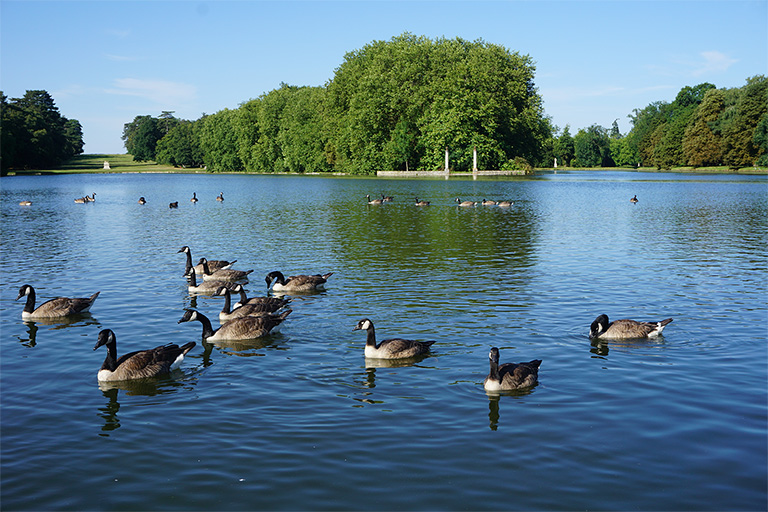
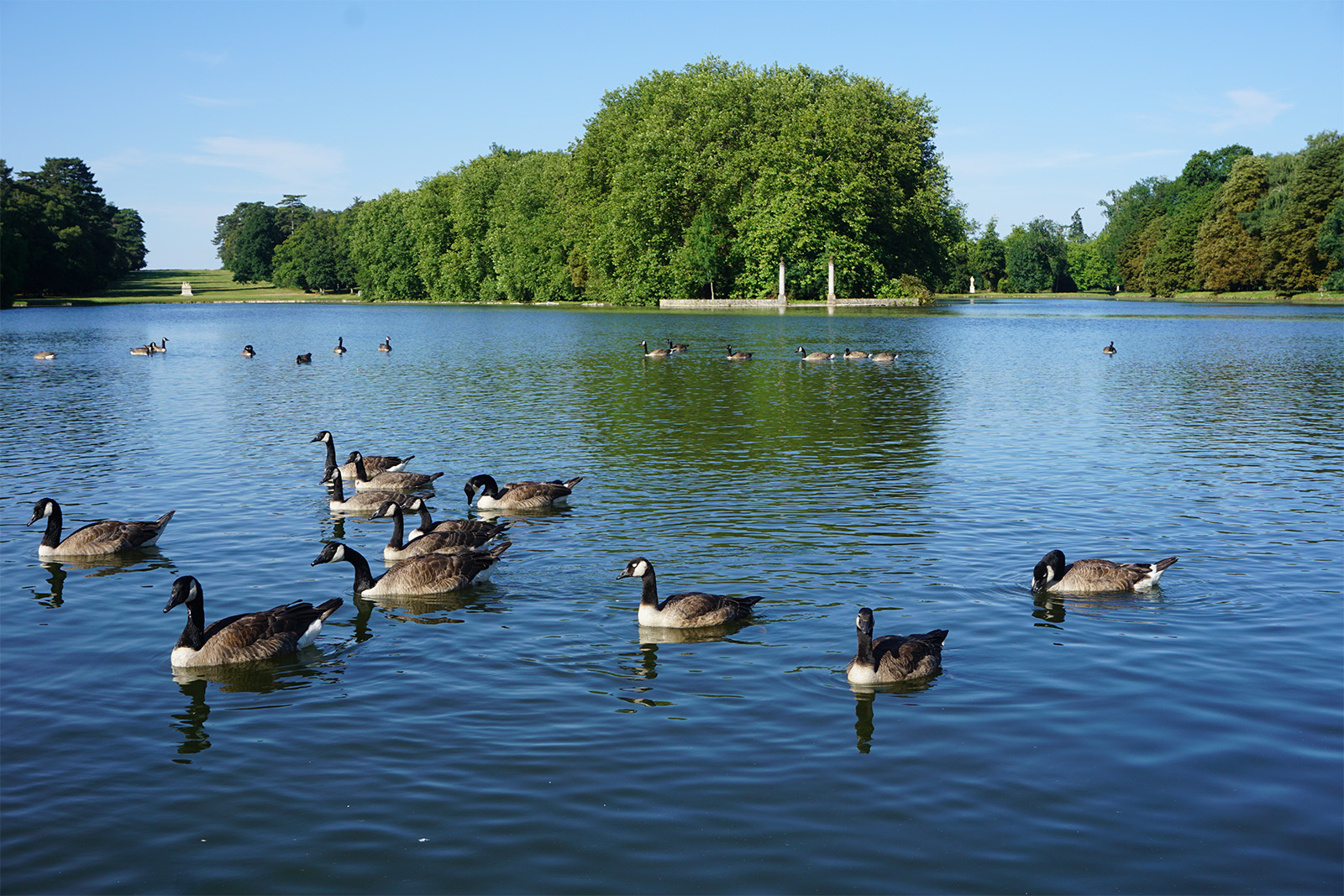
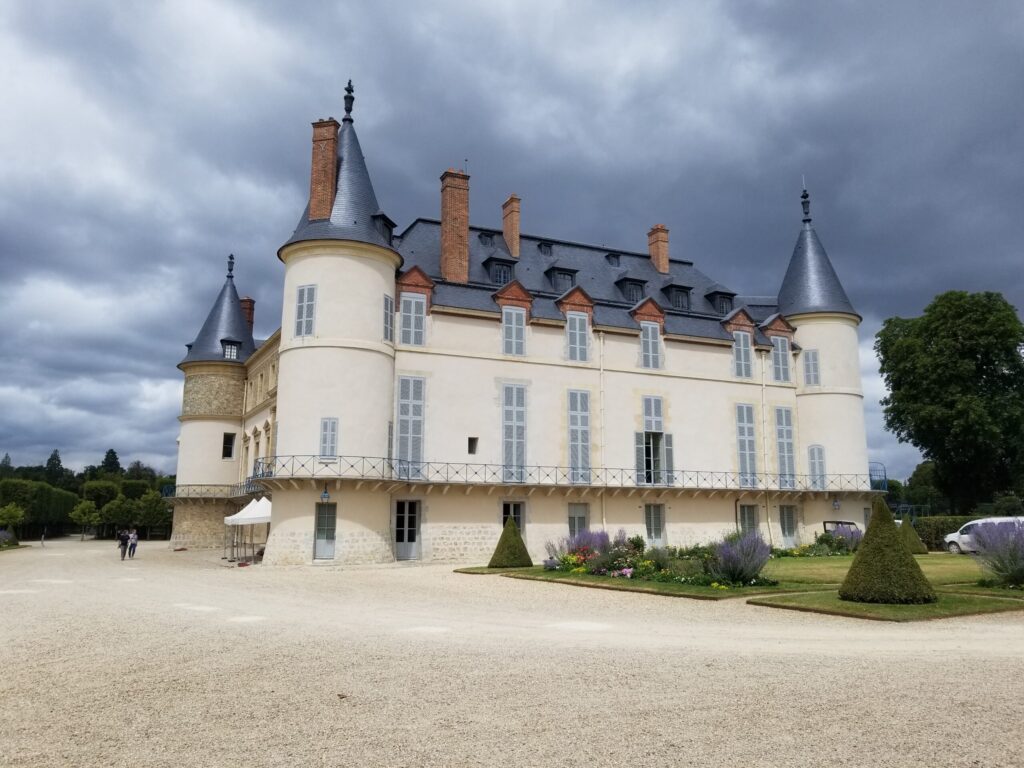
Chateau de Rambouillet was built in 1368. The chateau and the surrounding forest was owned by the marquis de Rambouillet Charles d’Angennes during the reign of Louis XIII. It was bought by King Louis XVI in 1783 from the duc de Penthievre. Napoleon lived here before he was exiled to St. Helena. From 1896-2009 the castle was used as residence of France’s presidents.

A beautiful park with a lake surrounds the castle and it was built during 18th century while owned by duc de Penthievre.
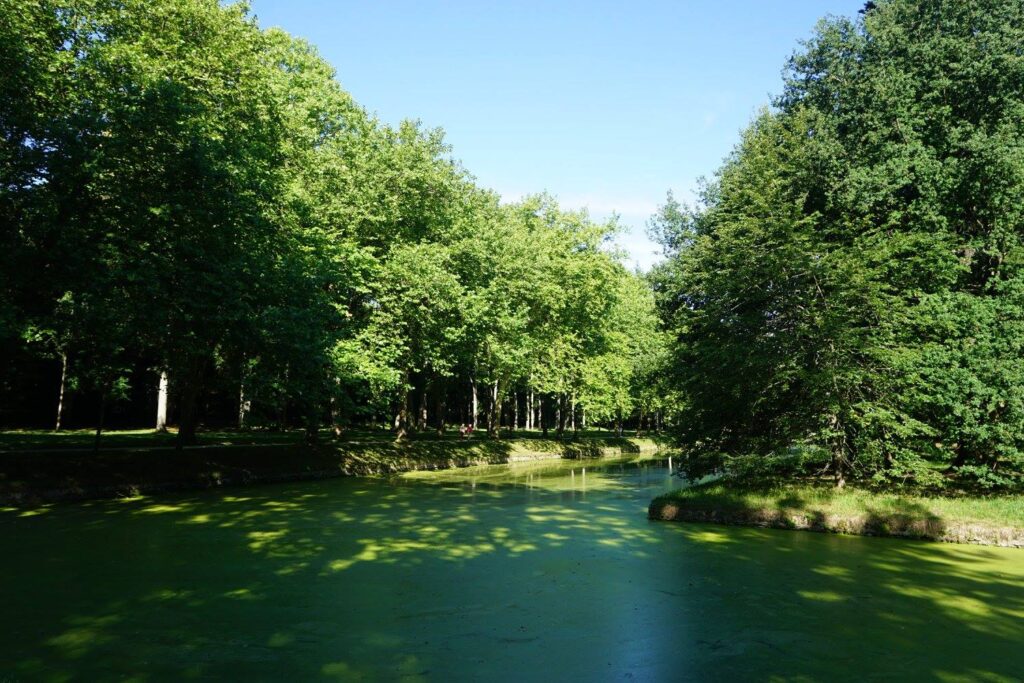
The park consists of six artificial islands that are geometrically shaped.
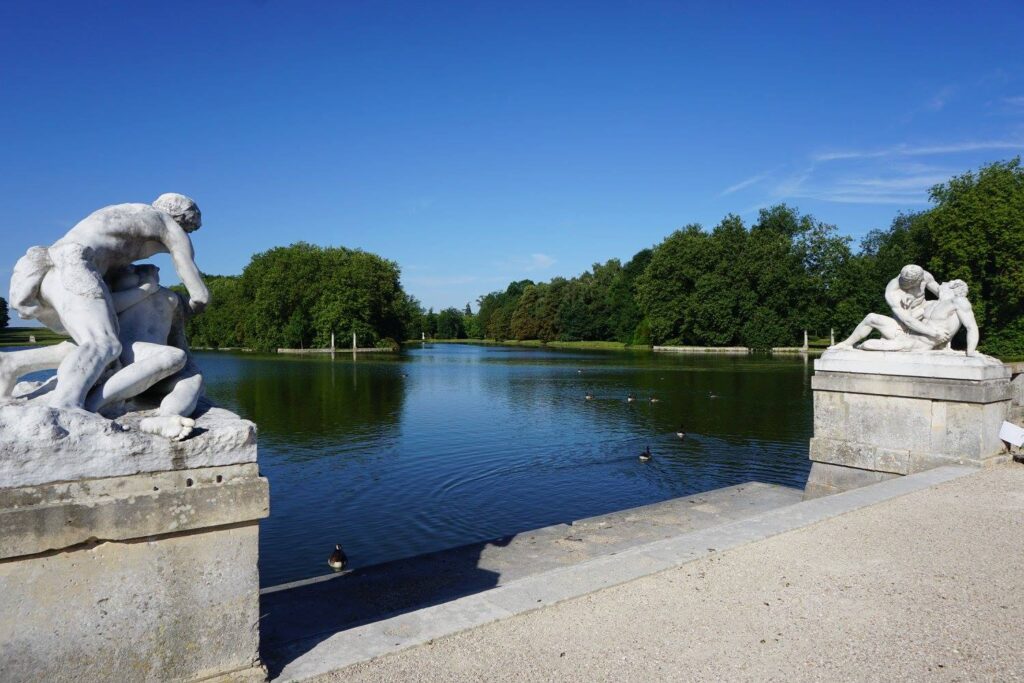
Numerous sculptures adorn the park.

By the end of 19th century bodies of two dead lovers were found inside of « Grotte des amants » or « cave of lovers ». They had a walk through the forest when the storm hit. They searched for the shelter inside the cave when thunderstroke had killed them.
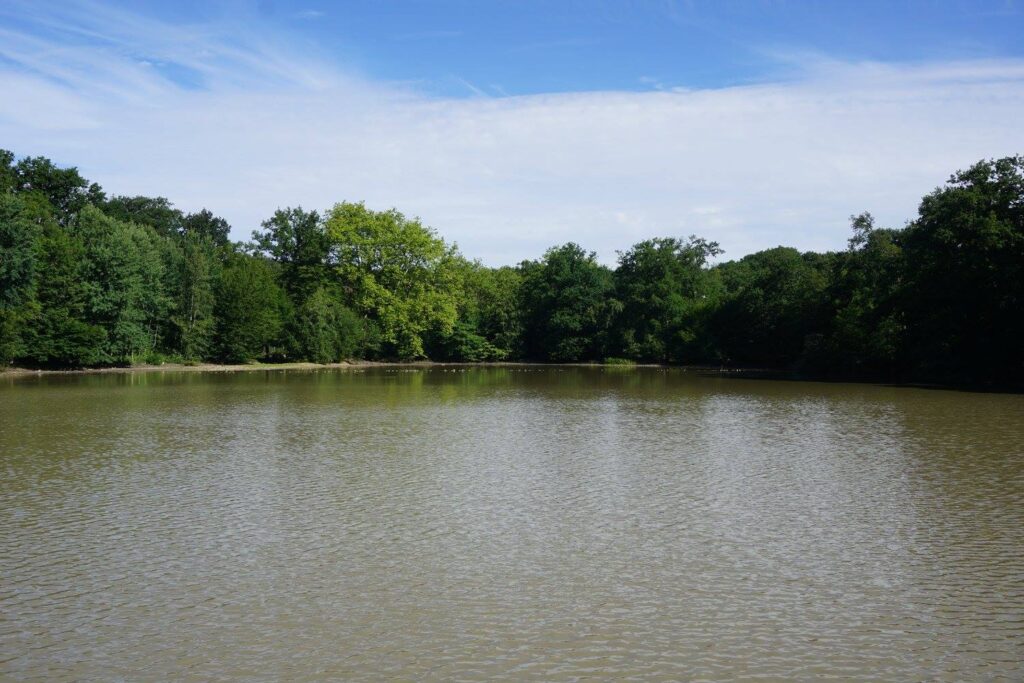
The first lake that we came across on this route is Etang de la Faisanderie (pheasant pond). Etang means fish-pond but by definition is larger than « mare » but smaller than a lake (lac). Specifically this fish-pond was located on the site of a former fief (feudal estate) Montorgo , which was bought by a nobleman (Seigneur) of Rambuillet Renjo d’Anje in the 15th century. King Louis XVI bought the site of his cousin duc de Penthievre in 1783. It was intended to be used as hunting forest but in the time the construction of an experimental farm began. In order to sustain itself 200 hectares of arable land were needed. It soon became apparent that the surrounding land was too swampy and had to be dried out. Network of ditches was made and fifteen ponds were formed and they create this great fish-pond.

Nest to the fish-pond is the oldest oak in the Rambouillet forest, ‘’Le Chene de Montorgueil’’ or ‘’Montorgueil Oak’’ which once belonged to fief (feud estate) of the same name, which was bought by Regnault d’Angennes in the 15th century. It is estimated that the tree is about 550 years old, which is why it is ranked among the 200 most significant trees in all of France.

Royal farm was established during reign of Louis XVI 1785. on premises of royal hunting ground. It was conceived as an experimental farm. During that period interest in agriculture research was on the rise. Its main goal was experimenting with acclimatization of domestic animals brought from foreign countries and with intention of improving French breeds. The farm became home to Swiss cows, Turkish goats, Asian bison from Italy, Belgian work horses while Merino sheep arrived in 1786 year.
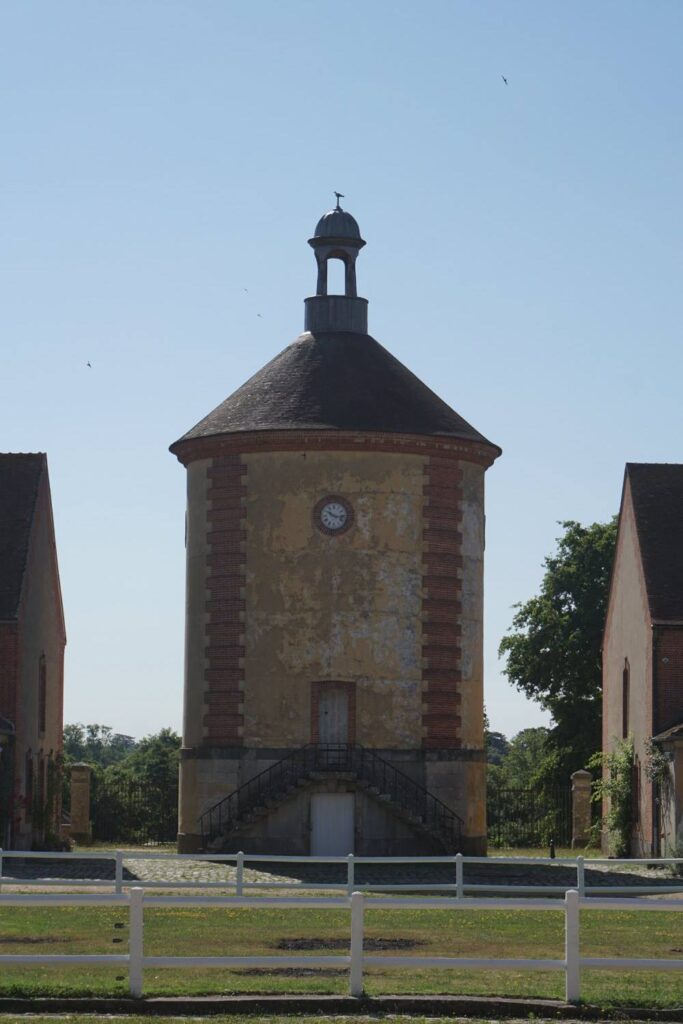
Most fascinating building of the Royal farm is dovecote. Dovecotes were very pupular in 18th century and they represented the prestige of kings and nobles. This dovecote was considered to be the largest in Paris area and could shelter some 2000 pigeons.
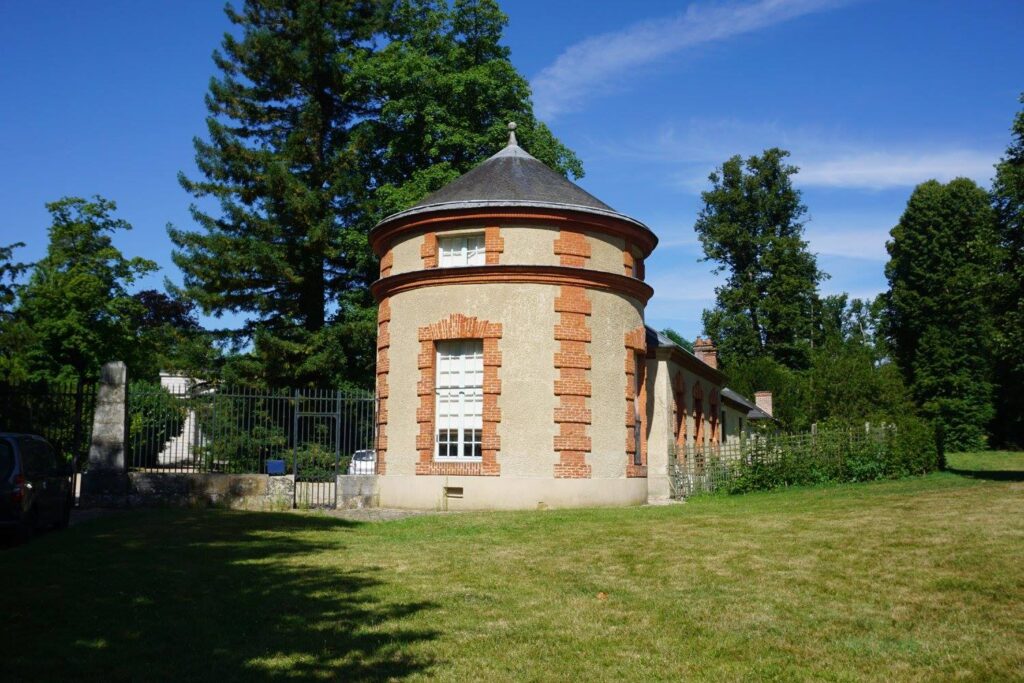
King Louis XVI founded the Queen’s dairy in 1786-1787 in order to surprise his wife, Queen Marie Antoinette. During the reign of Louis XVI return to the nature lifestyle gained popularity and was promoted by Jean-Jacques Rousseau. Visitors of Queen’s dairy could find out about traditional ways of milk production and they could taste milk and dairy products inside of tasting room.
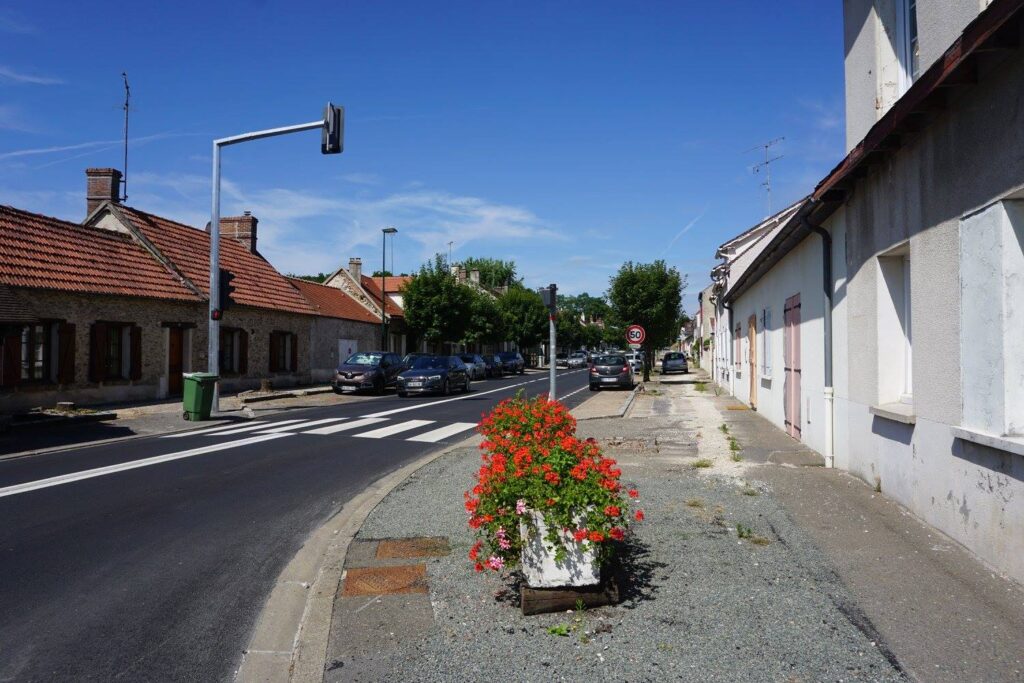
Next from Rambouillet the route goes towards small village Gazeran, of which there is not much to say. The village appears as to be lost in time and space. You may wonder the village for hours and not see a person.

Luckily, not far from Gazaren, we enter the woods again.
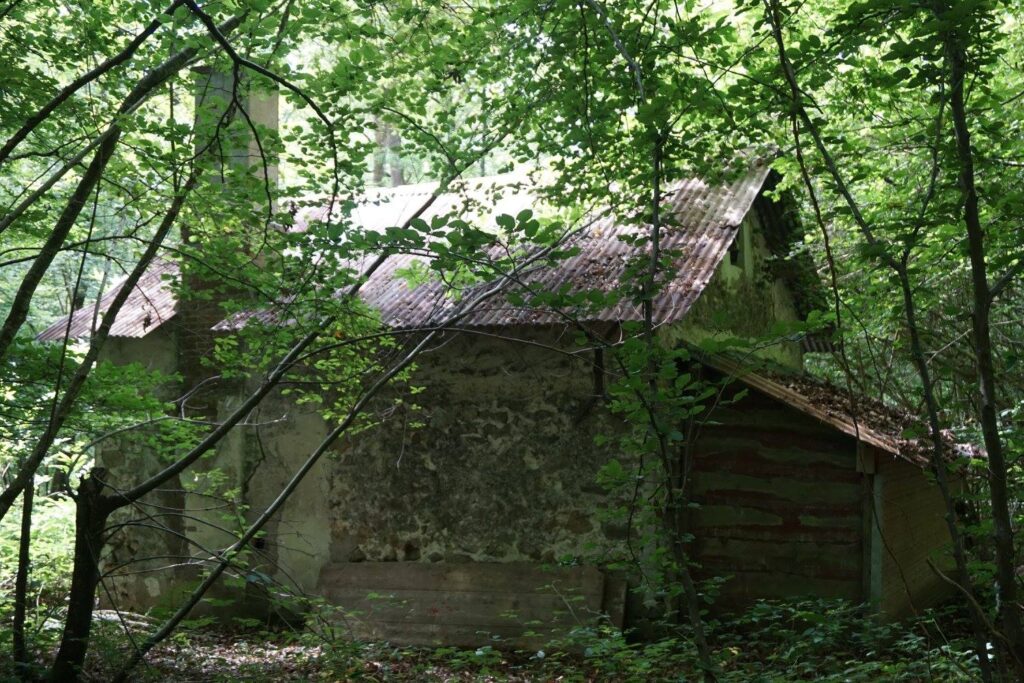
On the trail we run into this house reminding us of witch tales. Unfortunately these houses are left without their witches and are empty these days.
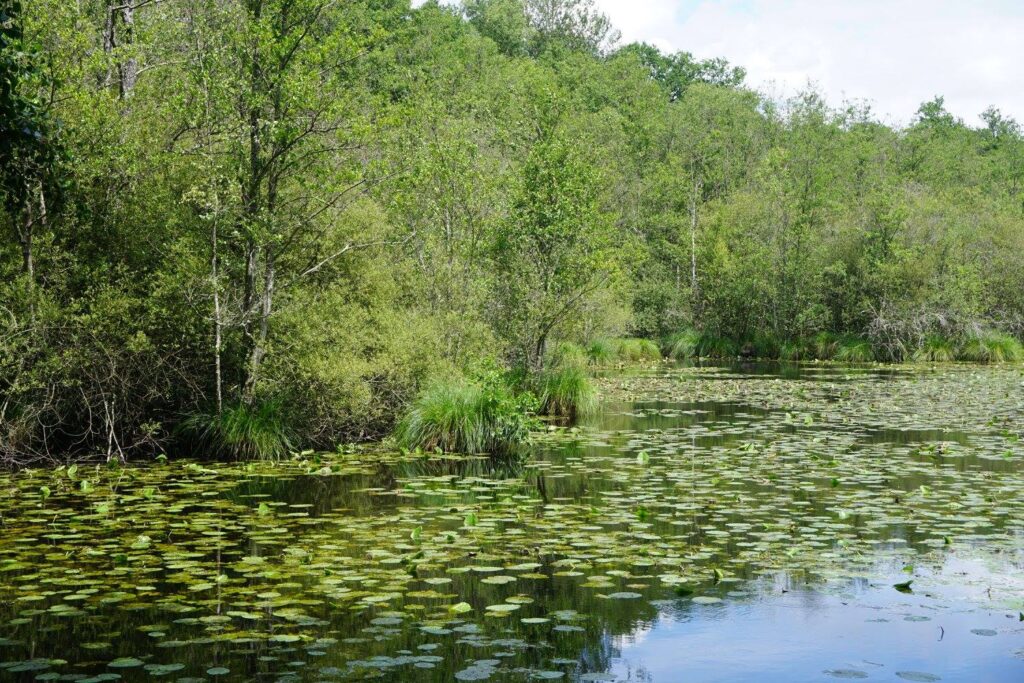
Next we arrive at D’Anjen fish-pond.

D’Anjen is connected with the neighbouring fish-pond Carre and there is this old mechanism which served to leak water from one pond to another. There is no record of the time this mechanism belongs to, perheps the period of Louis, Napoleon or a later date.

After the pond we encounter this mysterious entrance covered with ivy. We wonder what might await us behind the gate.

Once we pass through the gate we approach this old tree.
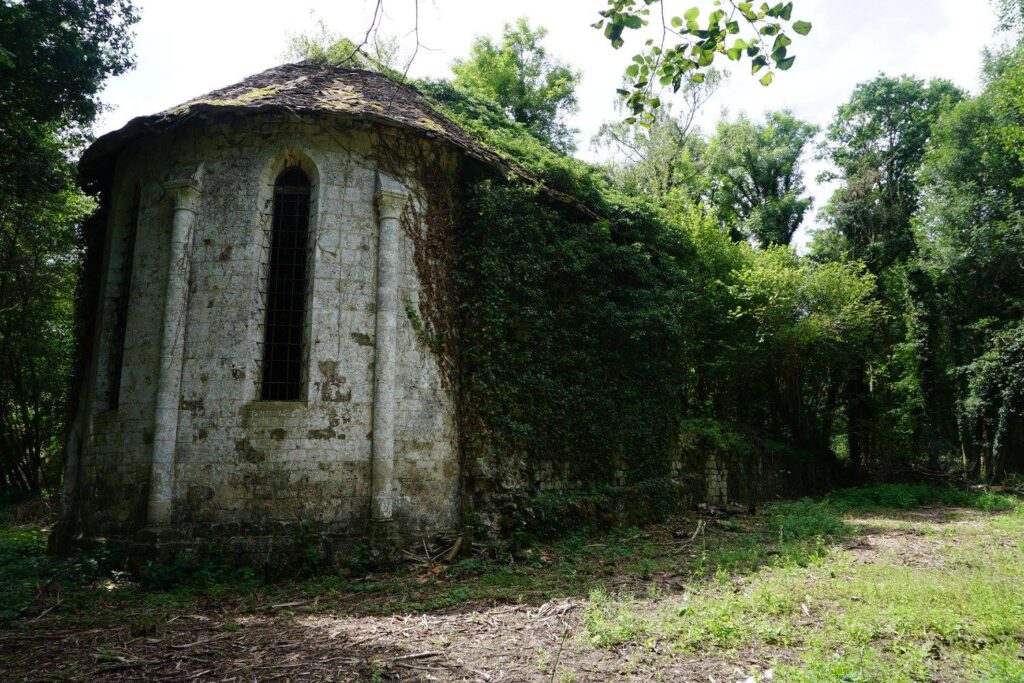
Abbey of Mulino was founded somewhere between 1155 and 1176 by the minastic order of Gradmon supported by Louis VII. When the reform of the order came in 1317 the abbey was secularized to become the property of the Angenne family in 1576. At the time, Rambouillet castle was property of Angenne family as well. It got its name after numerous mills in that area (moulin- eng. mill, Moulin Rouge in Paris being the most famous one in whole of France). The abbey was ruined in 1643. Only the fance and the chapel have been preserved. In the 18th century it continued to decline and during the revolution three quarters of the church was ruined.

Further on from the monastery and through the forest we arrive at the the most popular picnic area in the Fontainebleau forest. Its name is Les Rochers D’Angennes or “Angenne’s rock”.

Oratoire Saint-Fort is a small chapel on a place where by the legend in the year 300 bishop of Bordeaux while on his way to Lutetia (Roman name for modern-day city of Paris) saw a crippled child. As bishop was crying over the child’s destiny, and his tears turned into a lake in which the child took a bath and miraculously cured.

The history of the forest is very interesting. In 1202 it became feud estate of Montfort family. In 14th century one part of the forest was bought by the D’Angette family, and in 15th century a descendant of Montfort family, Anne de Bretagne (Anne of Brittany) married to King Charles VIII and the forest belonged to the Royal family. It was often used as hunting ground. In 1706 Louis XIV donated the forest to his nephew duke of Toulouse, to be bought in 1783 by Louis XVI together with the castle. Since 1872 it becomes state property. Rambouillet forest was exploited for centuries which led to it’s deforestation. In December of 1999 Cyclone Lothar devastated 350 000ha of forest.
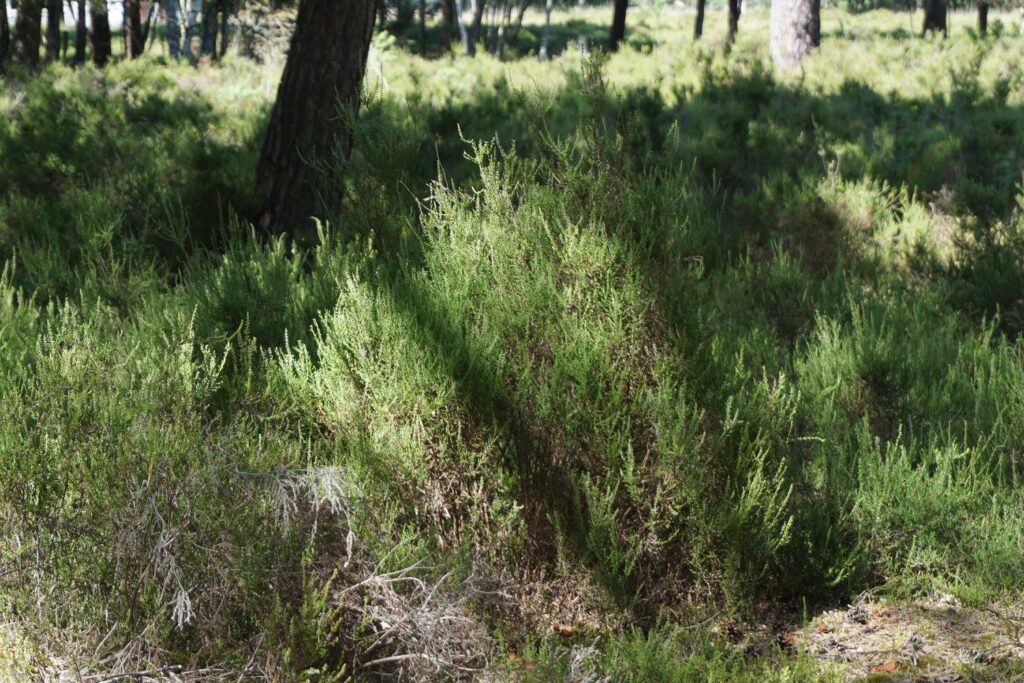
Due to this deforestation, ever since 19th century systematic afforestation has been implemented. For afforestation, mostly used trees are oak and fir. Old and diseased trees are being removed which provides young trees with sufficient access to water and sunlight. In 80-90 years parts of the forest where fir was planted will be completely restored.
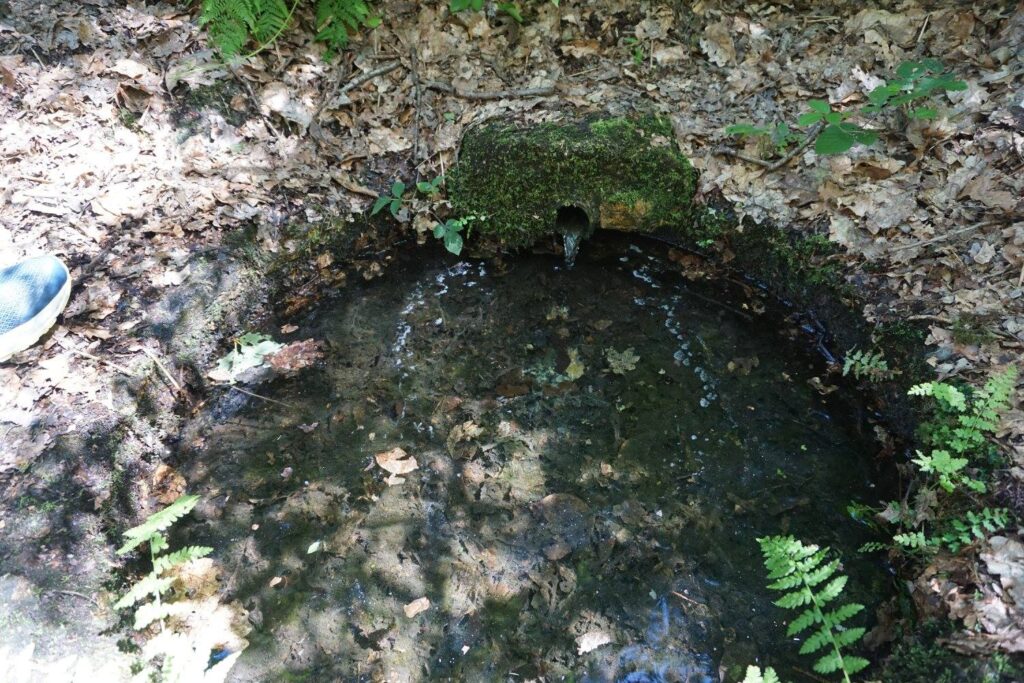
Trail passes next to water spring named ‘’The blue fountain’’.

The legend of ‘’The White lady’’ is connected to this place called ‘’Caves de planet’’. One evening a peasant, whose name was Tibo from nearby village Sen Legere, saw a woman dressed in white as he was passing by the ruins of the old monastery. Carried by the wind and without touching the ground she was approaching him. She asked him to follow her and two of them have entered the abandoned monastery. The doors have opened on her demand and at the bottom of the couloir great treasure appeared. The lady gave Tibo the permission to fill his sack with the gold with only one condition. Once he leaves the place he must never return no matter what. Joyful, the peasant emptied the flour from his sack and loaded it with the gold. As he left he heard the door slam loudly behind him and his fear was so great that he could not resist returning. As soon as Tibo returned the lady emptied his sack. It was rumored that he died soon after of the nightmares that were hunting him. Hoping to find the gold and other miracles related to this place the escavating started in 1835. On that occasion they found the remains of a large hall, coins from the time of Charles VI, Gallo-Roman pottery etc. Even to this day it is still very little known about this place. It is noted that in the 12th century there was a hermitage of a mong, certain Gijmon or Gijmar. Many other legends are connected to various places throughout the forest. One legend for example, tells of a supernatural being who lived on top of Mount Ferier, near the town of Burdon, which with the help of its supernatural powers managed time and directed clouds and lightning at will.

Dolmen de la Pierre Ardoue is located near the town of Saint-Léger-en-Yvelines. Dolmen represents a megalithic tomb. A megalith is a huge stone block. A group of stone blocks on top of which a horizontal block is placed makes a dolmen. Some kind of tomb that looks like a table. It is assumed that this dolmen was made over earthen mounds called tulumus. The largest stone of this particular dolmen has six cubic meters and weighs 15 tons. It was created in the Neolithic period by the same Neolithic culture that built the most famous megalith, the Stonehenge in England. In 17th century it was noted that this dolmen served as Pierre Ardoue’s tomb and in 1906 was declared a historical monument.
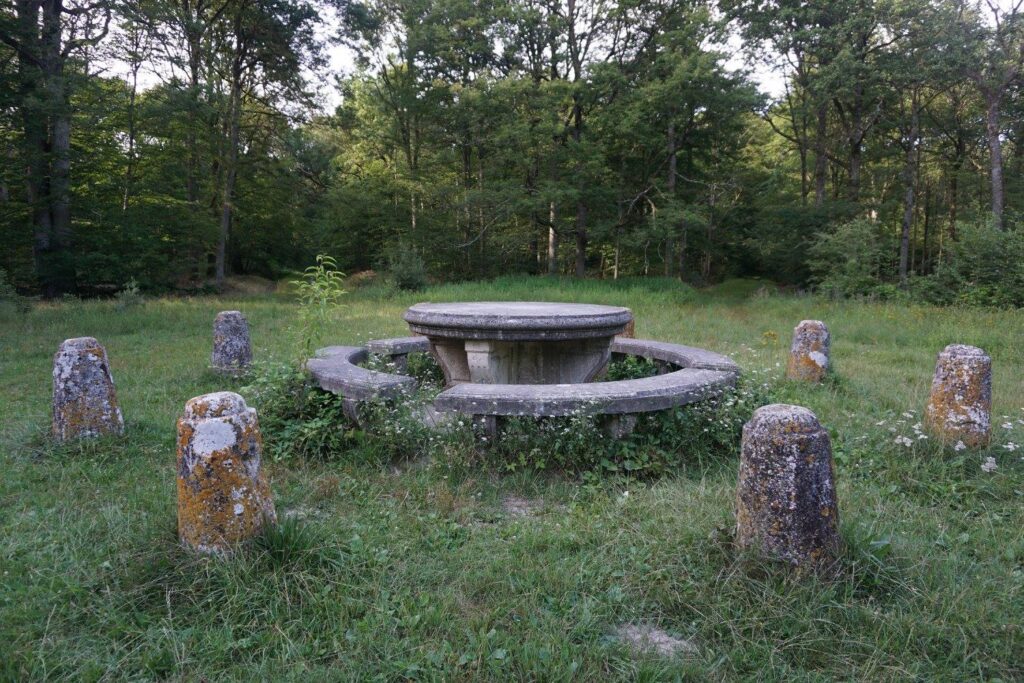
Table de Roi or ‘’The Royal table’’, was often referred to as table for taking shoes off. It is not a circular table of Artur’s Knights, it was created later during the time of Louis XVI. It was intended to be used by hunters who used the columns around the table for taking their boots off and the table itself for dining.

At the end we arrive to archeological remains of this Galo-Roman villa near the village of La Milier. It was discovered by an archaeologist Fransoa Zuber in 1963 and quite by accident as he was searching for the remains of the Roman road starting at Beauvais, through Paris and Chartres and passing through the Forest of Rambouillet. The villa dates from the 1st centry B.C. and was used until 2nd century. It was about 80m long, 15m wide and 5m in height….
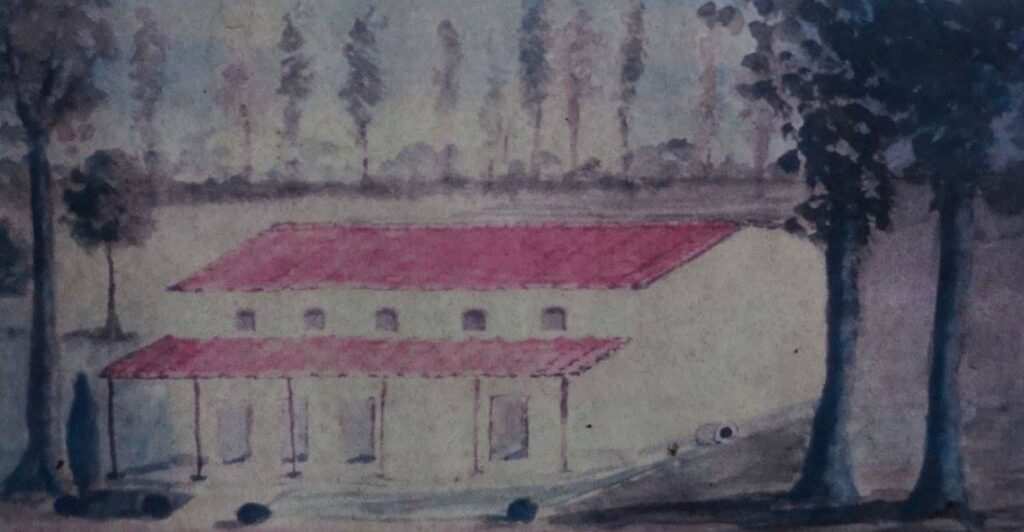
….and looked something like this. The villa was luxurious because all the halls were decorated with frescoes and had a heating system. It is presumed that it was used for hunting purposes. Nearby another four villas from Roman period were found and some fifty Roman military camps which were built for security reasons. This section of the Roman road that passed through the forest was very dangerous as it was often attacked by robbers.
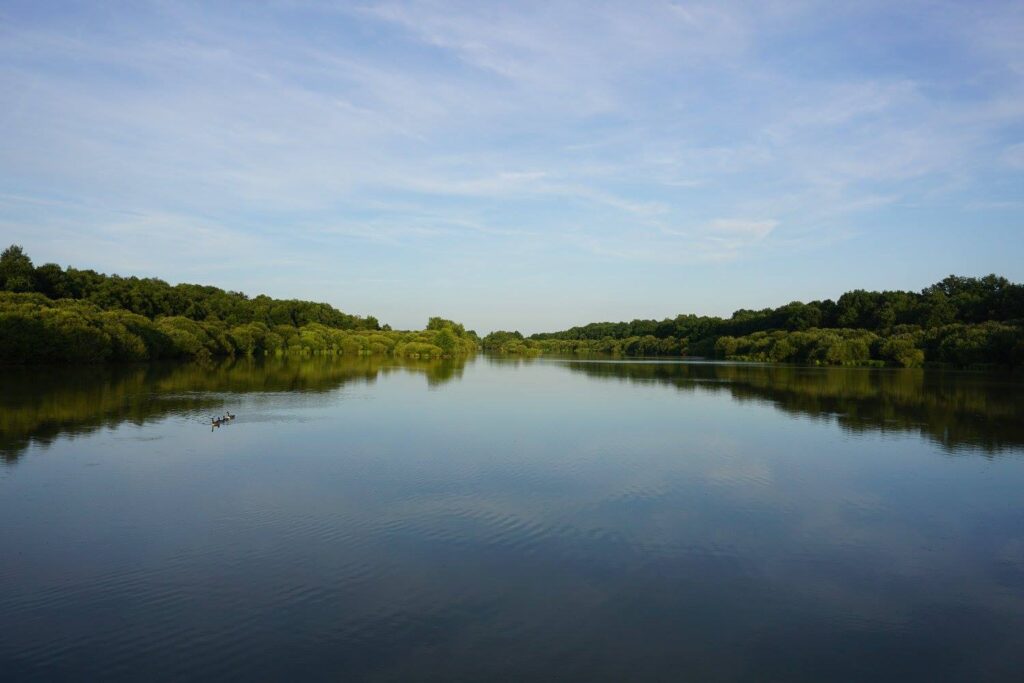
Étangs de Hollande makes the group of six artificial lakes made during Louis XIV, with intention to collect the water from the Rambouillet basin and supply the fountains in the Palace of Versailles. The water was transported from the lake to these vountains in Versailles via aqueduct. Name ‘’Holland’’ was after the nearby palace which no longer exists.
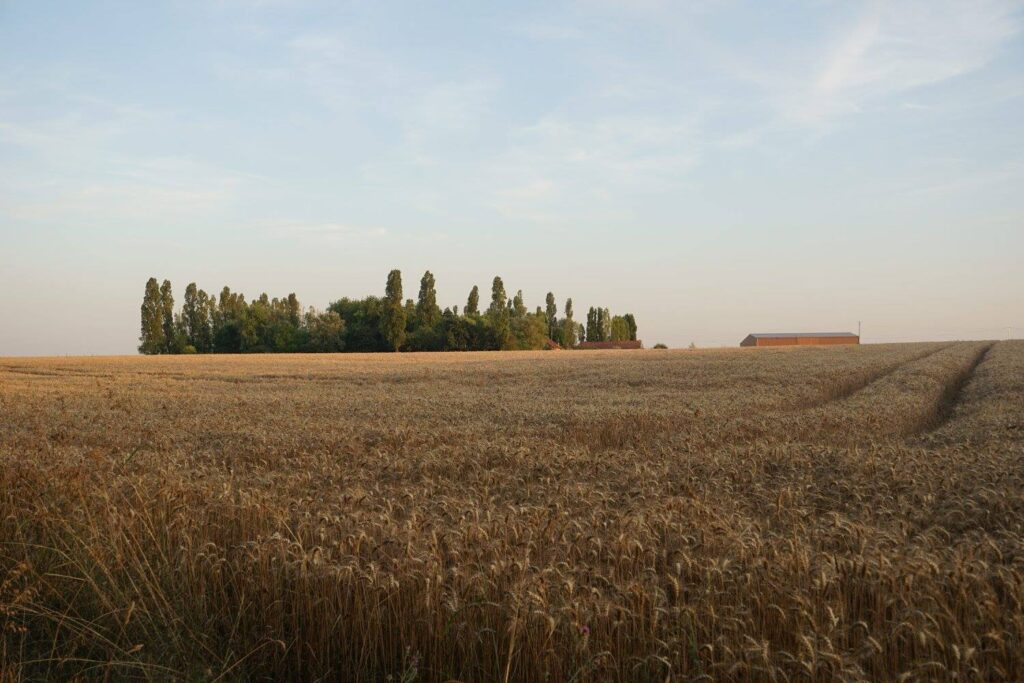
From the Oland lake we arrive to Le Perray-en-Yvelines where we take the train back to Paris.
THE END!!!
Check out another beautiful wonder of Île-de-France, Forest of Fontainebleau.
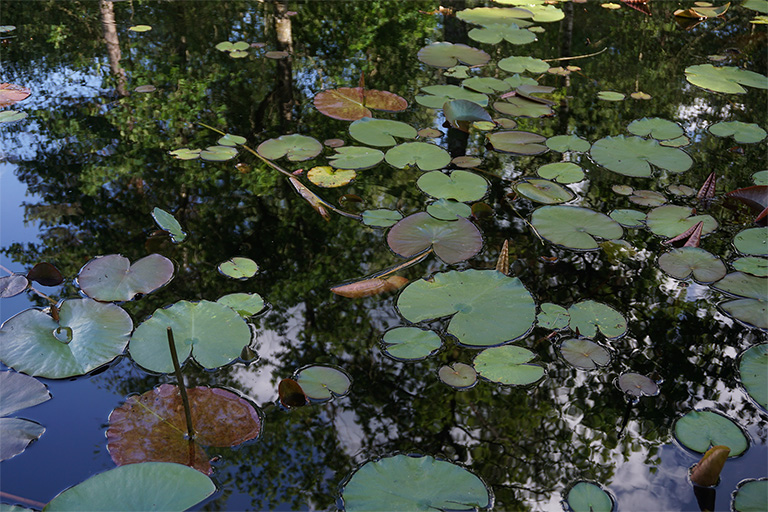
Paris, French capital is the major city in Europe and centre of art, culture, education, fashion and gastronomy. Paris is locate
Read More